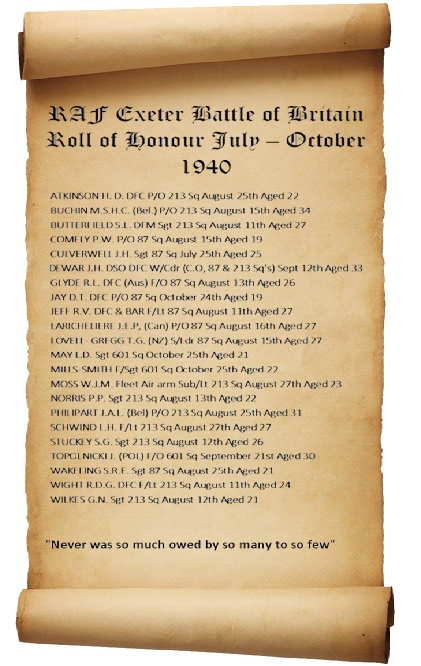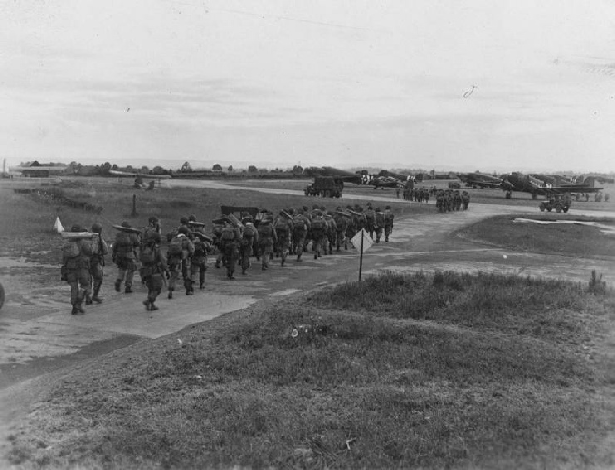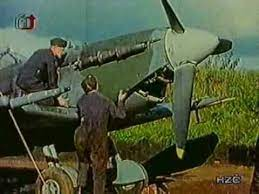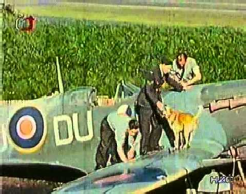South West Airfields Heritage Trust
“Preserving Aviation History for Future Generations”




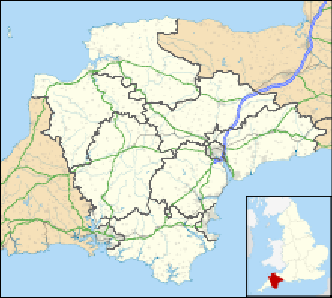
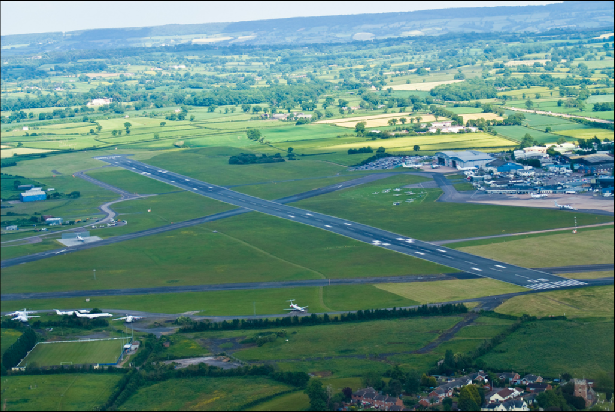
Background
A popular departure point for many in the south-
A survey was immediately undertaken to find a suitable site, and after land close to the river was rejected, 180 acres of land belonging to Waterslade Farm to the east of Clyst Honiton east of the city was selected.
After a public enquiry in 1934, the land was compulsorily purchased the next year at a cost of £10,470. On 1 June 1937, a 21 year lease was signed by Exeter Airport Ltd, a company formed by the Straight Corporation. The rental was £100 per year for the first seven years, £200 annually for the second seven years and £300 per year for the final seven years; a further 2% of the turnover was also to be paid to Exeter Corporation.
The terminus was originally to be constructed in the south west of the site, but it was changed to the south east corner, which increased the cost of running cables and other services. A purpose built terminal building was constructed at a cost of £8,500, while levelling the site and removing trees cost £7,729.
The Airport opens
The airport was opened to traffic on 31st May 1937, the day before the lease commenced, although the first aircraft to land was on the 12th May when a Leopard Moth of Air Dispatch Ltd, and piloted by S W A Scott brought a copy of the film of the Coronation of George VI for the local cinemas. The airport was far from complete, and tents were used as the first terminal buildings.
Jersey Airlines immediately inaugurated a summer service of eight flights per week from Jersey in de Havilland DH84 Dragons. Railway Air Services ran connecting flights on to Plymouth and Bristol. The first airliner carrying passengers to land at the airport was on 31 May 1937, when a Jersey Airways DH 86 Express, a four engined aircraft that was the fastest British built airliner in the world, arrived.
There was also a Flying Club formed, and within two years it had a membership of almost 300. Of these, 57 pilots who learnt to fly at Exeter served as pilots during WW2.
War comes to the airport
The airport had always been intended for use by the military in the event of war, and on 3rd September 1939 the airport was taken over by the Air Ministry. Three asphalt runways were laid by John Laing & Sons Ltd, new hangers constructed and the airport extended by demolishing Waterslade Farm. Jersey Airways were employed on evacuation duty on their old route from the Channel Islands during June 1940.
The first operational unit to arrive on site was a department of R.A.E Farnborough, known as ’02′, equipped with Fairey Battles, the Fairey P.4/34, Harrow, Virginia and Wellesley.
One of their tasks was deliberately flying into cables hung from barrage balloons to test wire cutting devices.
June 1940 saw the formation of the gunnery Research Unit at Exeter from ‘A’ Flight Armament Testing Squadron who were employed in experimental flying using a variety of aircraft including Spitfires, Defiants, a Henley, Hurricane and a Gloster F.9/37. These aircraft tested various types of guns and turrets.
During this time the RAF personnel were housed either under canvas or billeted in the grounds of Farringdon House.
.
No 213 Squadron was based at Exeter from the 18th June 1940; they were joined by No 87 Squadron on 5th July. RAF Station Exeter became officially operational on 6th July 1940 and soon 87 and 213 Hurricane squadrons were flying out of Exeter to protect the Channel ports.
Although the role of the two squadrons was initially to escort the Royal and Merchant Navy, it was not long before they were playing a major role in the ‘Battle of Britain’.
First Kill
A Hurricane from 87 Squadron brought down an Me110 that had been escorting a force of enemy Stuka dive-
A German Heinkel 111 bomber which was returning from laying magnetic mines in the Bristol Channel became an early victim of Exeter’s night fighters when it was shot down in the early hours of July 26th 1940, by Flt John Cock in a Hurricane Iib crashing at Smeatharpe near Honiton.
Although the Hawker Hurricane was considered unsuitable for this type of operation, they also began to fly defensive patrols against night bombers.
Targets around the South West of England were heavily bombed by the German Luftwaffe and something had to be done to counter these raids.
One of 87 Squadron’s Flights was regularly sent to Hullavington, to the east of Bristol’ in order to extend the night defences, while the remainder of the Squadron defended the south coast.
As the ‘Battle of Britain’ built up, the fighter operations were stretched to their limits at Exeter. Although the most westerly of the airfields involved in the Battle of Britain, Exeter was an RAF Fighter Command Sector Station responsible for the airspace west of Portland. Hurricanes from Exeter were heavily engaged in defending the coast during the height of the Battle of Britain and during August 1940.
Adler Tag’ (Eagle Day)
A peak arrived on Sunday 11th August when fourteen Hurricanes from the two Squadrons were scrambled at 10.08 to help prevent another raid on Portland. With 70 bombers and 90 escorting fighters this was the largest raid so far mounted against any target in Britain.
During the skirmish 87 Sqn claimed two Ju88’s and a Me109 destroyed, but both 87 and 213 Sqns lost two Hurricanes each, and a total of three pilots.
The following day 213 Sqn was sent to intercept another raid on Portsmouth Dockyard, claiming two Ju88’s at the cost of two more of its aircraft and pilots.
On the third successive day of heavy air attacks, the fighter aircraft from Exeter were needed further east for the defense of Portsmouth, and claimed three more raiders; but at the cost of yet another two pilots. One from each squadron.
Sunday 25th August produced another hectic day, as Exeter squadrons joined others from Warmwell, Middle Wallop and Tangmere to counter another attack on Portland. 87 Sqn claimed four enemy planes but another three Hurricanes and pilots were lost, one from 87 Sqn and two from 213.
Exeter's involvement in the battle was acknowledged by the Luftwaffe when, on the 21st August it suffered its first raid, when four people were killed and twenty-
The Battle of Britain moved further east during September 1940 and life became quieter. No 601 Squadron, known as the millionaires squadron because Max Aitken, son of Lord Beaverbrook and Witney Straight whose Straight Corporation had managed the airport were pilots, moved to the base on the 7th September.
Polish Squadrons at RAF Exeter 1941-
n 21 September 1940, during the Battle of Britain, the first Polish pilot to be killed flying from Exeter was a member of No. 601 Squadron, F/O J Topolnicki. He was one of 143 Polish pilots who flew in the battle, either as members of RAF squadrons, or in the two Polish fighter squadrons formed, Nos. 302 and 303.
Further Polish squadrons were to be formed in the war and on 26 April 1941, No. 307 Squadron, equipped with Boulton Paul Defiants, arrived at RAF Exeter from Colerne near Bath. These aircraft were fitted with a gun turret and required a crew of two. The squadron was to operate in a nightfighter role. During August, the Defiants were replaced by twin-
In the weeks preceding the arrival of No. 307 Squadron, the city of Exeter had been bombed by the Luftwaffe at least on four occasions, causing much death and destruction. RAF Exeter had suffered too and as a result of which, on 9 June, half of No. 307 Squadron’s strength, along with half of the Hurricanes of No. 504 Squadron, were dispersed to RAF Churchstanton (later called Culmhead). This was a new, but not fully completed, airfield on the Blackdown Hills situated on the Somerset/Devon border.
On 6 August 1941, No. 307 Squadron was joined at Exeter by another Polish squadron, No. 317, equipped with Hurricane Mk IIs; but these were to be replaced by Spitfire Mk Vs during early December. At the end of March 1942, No. 317 relocated to Northolt, but during its short time at Exeter had managed to destroy at least twelve enemy aircraft for the loss of four pilots killed.
No. 307 Squadron remained at Exeter until April 1943, having had their Beaufighters replaced with Mosquito Mk IIFs in the interim. During their time at Exeter, No. 307 lost 19 aircrew, but had succeeded in destroying many attacking enemy aircraft, as well as disrupting numerous raids by the Luftwaffe. Nineteen Polish airmen now lie buried in Exeter’s High Cemetery alongside the citizens who were killed in the blitz on the city.
The Poles of the two squadrons became well known in the locality: they had a reputation for being fearless and always wanting to be in the thick of the action. By the end of the war, the Polish Air Force flying from these shores had grown in number to no fewer than four bomber and ten fighter squadrons.
As a result of the agreements made at the Yalta Conference, Poland fell under the domination of Stalin’s Soviet Russia. As a result, there would be no triumphant return to a liberated Poland by these squadrons and by the end of January 1947 they had been disbanded. The majority of the personnel from these squadrons, together with 150,000 Polish soldiers and seamen who had also served under overall British command in World War Two, chose a life of exile, mostly electing to stay in the United Kingdom.
At the end of November 87 Sqn. was replaced by the still secret, Westland Whirlwind's of 263 Sqn. For the next two years or so, the airfield was involved in defending the south-
In addition, Exeter squadrons were often called in to defend shipping under attack in the Western Approaches. The Polish night fighter 307 Sqn. flying Defiants, Beaufighters and Mosquitoes was employed from May 1941.
Exeter was also used as the base for sending agents over to France; a curtained limousine would arrive at the far edge of the airfield where the passengers were transferred to a waiting Lysander, which then took off and headed for occupied France. The Lysanders based at two, secret locations, would commence their missions from RAF airfields such as Exeter.
In September 1942, 257 Sqn., flying Typhoons became operational at Exeter, while in 1943, Albacores were employed from 841 Sqn. Fleet Air Arm in anti-
Czechoslovakian Squadron 310
In May 1942 the Czechoslovakian Squadron 310 moved to Exeter until August of the same year and carried out offensive sweeps and bomber escort missions. Flying Spitfire VB’s & VC’s
These colour wartime films of a Czech fighter Wing were made here in the west country please click each picture to open link
The aircraft code marked NN are that of 310 Squadron who were operating out of RAF Exeter 1942 – 43 along with 312 Squadron aircraft code marked DU that were operating out of Harrowbeer whilst 313 Squadron aircraft code marked RY were based at Church Stanton. These three Czech Squadrons had taken over the role of the Polish day Fighter Wing from May 1942 until June 1943 continuing convoy patrols, and sorties over France plus hit and run attacks on German fighter bombers. These activities were coordinated from the Wing HQ at RAF Exeter.
Exeter, 440th Troop Carrier Group and D Day
The USAAF used Exeter alongside the RAF, with two squadrons of P-
On the 18th April the 440th Troop Carrier Group flying seventy C-
The Third Battalion 506th Parachute Infantry Regiment Screaming Eagles arrived in Exeter from Hungerford by train on 27th May and briefing for Operation Neptune, as D-
After take off, the four squadrons, totalling 45 aircraft, and code named Serial 10 carrying 723 men and 2 platoons from C/326th Airborne Engineers also of the 101st Airborne headed for the assembly area at Portland, in poor weather, before joining aircraft from other southern airfields for the journey across the Channel.
The unit lost three C-
The unit moved to Rheims in France in September and the RAF returned to Exeter, but in smaller numbers than formerly. As the Allies fought their way across France and Belgium to the German border, the need for defensive units lessoned and the airport transferred to 23 Group of Training Command in January 1945. No 3 Glider Training School relocated to Exeter where glider-
RAF Exeter supported many other important operations throughout the war; one of the most significant being the role it played during the Normandy D-
The American 440th Troop Carrier Group operated in joint occupation with the RAF during the summer of 1944, when they transported part of the US 101st Airborne Division to Normandy, as part of the Operation Albany D-
Click the link below for some of the names of the men of 3rd Battalion 506th Parachute Infantry as they Boarded some of the 45 C/47s of the 440th Troop Carrier Group on night of 5th June 1944 on operation Neptune
Film of the 101st on the night of June 5th 1944 at Exeter with the 440th
Click on the picture to open the film
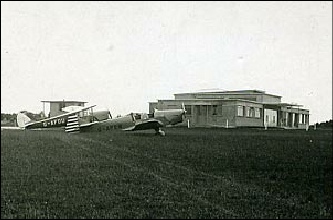
Terminal building in 1938.
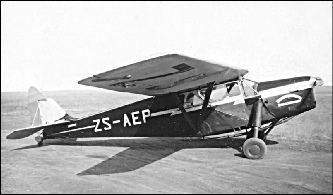
DH.85 Leopard Moth ZS-
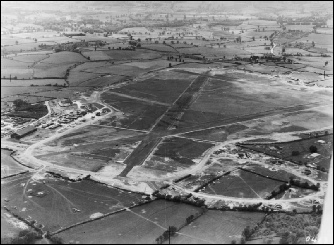
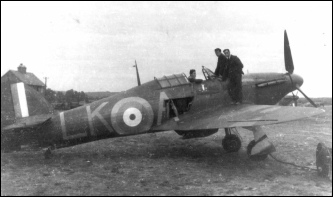
87 Squadron Hurricane similar to that Flown by Flt John Cock and below his victim
Summary

Location Clyst Honiton, Exeter
Opened 1937
In use 1937 -
Built 1937
In use 1937 -
Squadrons based there
AIRFIELD HISTORY

Main Gate at RAF Exeter Post War
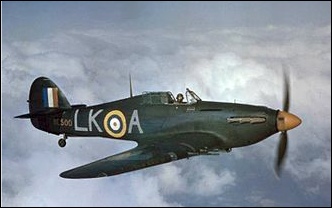
No. 87 CO Sqn Ldr Dennis Smallwood, DFC, in his Hurricane IIC, in early 1942.

HE110 brought down at Smeatharpe

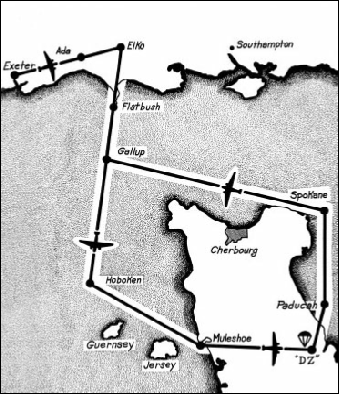
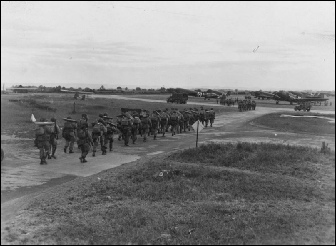
Paratroopers of the 101st Airborne Division march towards the C-
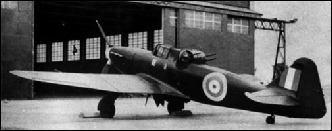
The squadron's Boulton Paul Defiant (N1671)at Jurby, late in 1940 Not Exeter
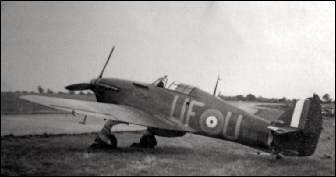
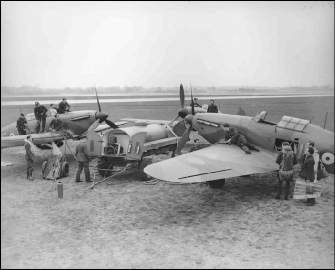
Hurricane from 601 Squadron ( Not Exeter)
Refuelling and rearming No.601 Squadron Hawker Hurricanes at RAF Tangmere, 1940
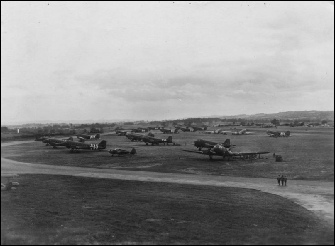
5 June 1944 photograph of C-
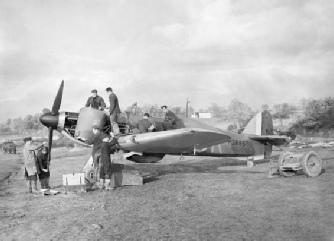
No.601 Squadron Hawker Hurricane at RAF Exeter 1940
Mission Albany Flight plan for the 440th Squadrons 5th June 1944
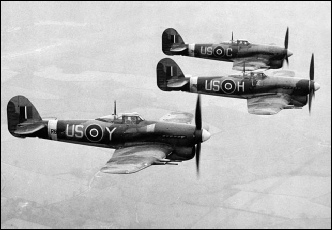
Three Hawker Typhoon fighter aircrafts of the British Royal Air Force, 1943. As used by 257 Squadron
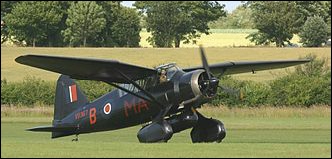
Westland Lysander Mk III (SD), the type used for special missions into occupied France during World War II.
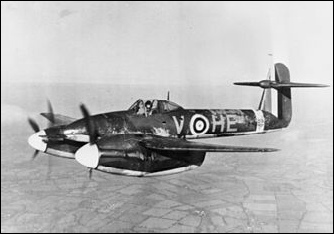
Whirlwind Mk I, of 263 Sqn Exeter, in flight over West Country
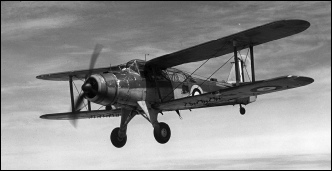
Fairy Albacore as used by Fleet Air Arm 841 squadron while at Exeter

Whirlwind (P6984) HE-

307 Mosquito Location unknown

310 waiting to Scramble Location unknown
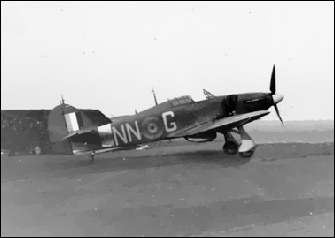
310 Hurricane Location unknown
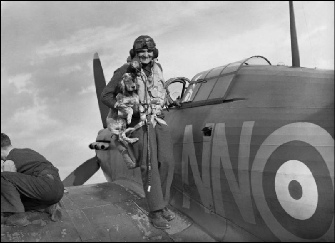
Sergeant Bohumil Furst of No. 310 (Czechoslovak) Squadron is greeted by the Squadron mascot on returning to RAF Duxford after a mission, 7 September 1940
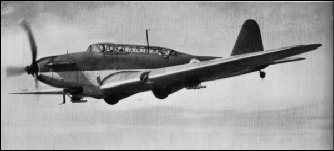
Fairy Battle
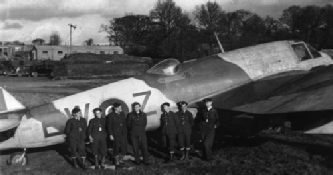
A 307 Beaufighter Mk F VI, EW-
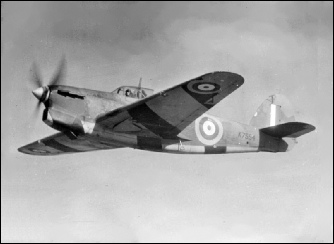
Hawker Henley
Sources of information, Text & Photographs
www.exetermemories.co.uk/em/airport.php
http://www.exeter-
http://www.exetermemories.co.uk/em/airport.php
https://www.exeter-
http://263squadron.weebly.com/orb.html
http://www.polishsquadronsremembered.com/307/307Story.html
http://www.polishsquadronsremembered.com/307/307_aircraft.html
http://www.polishsquadronsremembered.com/307/307_faces_1.html
http://www.rogerdarlington.me.uk/czechsinraf.html
http://aviationarchaeology.co.uk/2010-
http://440thtroopcarriergroup.com/
http://www.atterburybakalarairmuseum.org/wwii-
-
-
-
-
-
Commercial Services Resume
It was not until 1952 that Jersey Airlines started the first post-
Other airlines have been formed and operated at Exeter over the years. Some have lasted a year or two, others have been quickly taken over by a larger rival.
In 1972, a consortium of Devon County Council, Exeter City Council and Torbay Council purchased the airport from the government and in 1974, local government reorganisation saw Devon County Council take full responsibility, with the airport managed under contract by Exeter Airport Ltd and since that date Airport has continued to grow
Further information on Exeter and the activities that took place there during WW2 can be obtained from the following links
Post War
After the cessation of hostilities in Europe, in May 1945, a succession of RAF squadrons arrived and departed the airfield. By November 1945, 691 Sqn. were engaged in anti-
Exeter Airport was handed over to the Ministry of Civil Aviation in January 1946 , while the RAF finally left in October 1946, although 84 Gliding School continued to train ATC Cadets for many more years.
The airport started to attract engineering and other facilities associated with flying, and in February 1948, the small aircraft manufacturing company, Chrislea rolled out the first of seventeen Super Ace and Skyjeep variants. Development of the unconventional aircraft was initially at Heston, but production switched to Exeter in 1946. Production of this small, single engined aircraft continued up to 1952. The Harper Aircraft Company took over Chrislea which evolved into the Exeter Aircraft Company making parts for Vickers Armstrong Viscounts, VC10s and other marques.
The expertise of Exeter based aeronautical companies started with the repair of Spitfires in the workshops of Pike's Garage during the war based where the Riverside Leisure Centre can now be found. In 1988, these skills were still evident when West country Aircraft Servicing overhauled the last flying Lancaster bomber, which was part of the Battle of Britain Memorial flight.
The Exeter Aero Club also returned in June 1947 to a still camouflaged airfield, and commenced offering Private Pilot and Flying Instructor courses. A private pilot licence holder could hire the club's Auster or Tiger Moth for £3 per hour and a trial lesson for an aspiring pilot was £1-
3 Civilian Anti-
This unit often referred to as the CAACU was formed in March 1951 for target towing, testing and instrument calibration for the RAF, Army and Navy. They operated many famous aircraft types from the war such as Spitfires, Mosquitos, Beaufighters, and Ansons as well as postwar types such as Vampires, Meteors and from 1960, Hawker Hunters.
In its twenty years existence, the unit flew over 75,000 hours and provided aircraft for use in films such as Reach for the Sky with Kenneth More in 1956 and 633 Squadron in 1964. In Reach for the Sky, the units Spitfires were given false RAF markings painted on them to cover the CAACU markings; water based paint was used, and every time it rained, the markings were washed off, requiring them to be repainted for the next sequence. A Spitfire used in the film is preserved at Auckland War Museum and a Mosquito from 633 Squadron can be seen at Hendon Museum.
Back to Top
RAF Exeter

Southwest Airfields Heritage Trust © 2017
